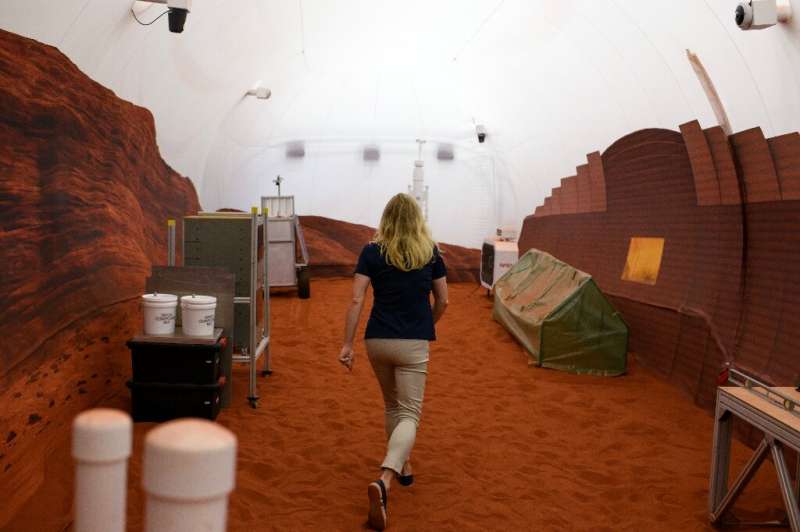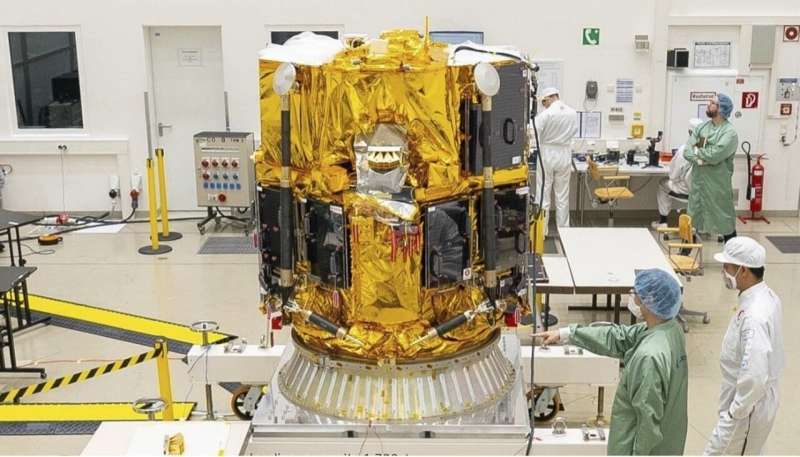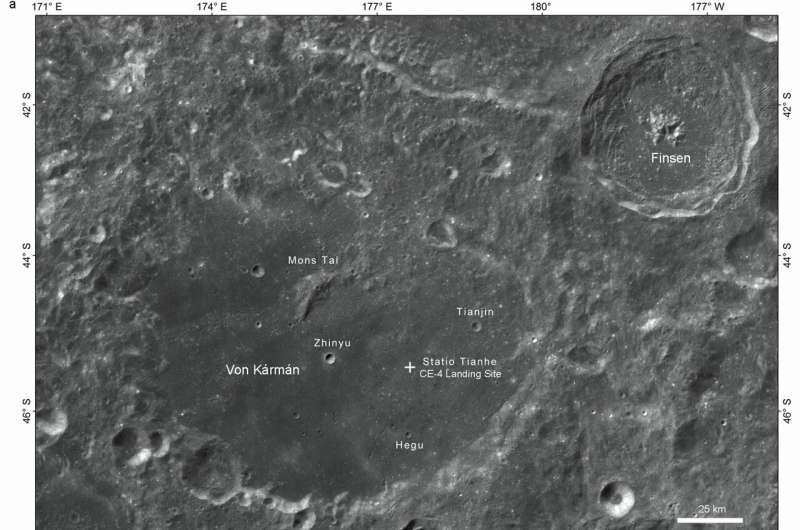NASA, Boeing provide update on Starliner flight test readiness
Sunday, 28 May 2023 06:27 NASA and Boeing completed a joint Crew Flight Test checkpoint review May 25 ahead of the first flight of Starliner with astronauts to the International Space Station. During the checkpoint, mission teams reviewed open work ahead of launch planned no earlier than July 21, including emerging issues that need a path to closure prior to a decision to fuel the spacecraft in June.
"We are taking
NASA and Boeing completed a joint Crew Flight Test checkpoint review May 25 ahead of the first flight of Starliner with astronauts to the International Space Station. During the checkpoint, mission teams reviewed open work ahead of launch planned no earlier than July 21, including emerging issues that need a path to closure prior to a decision to fuel the spacecraft in June.
"We are taking NASA pursues Lunar Terrain Vehicle services for Artemis Missionm
Sunday, 28 May 2023 06:27 NASA is seeking industry proposals for a next-generation LTV (Lunar Terrain Vehicle) that will allow astronauts to go farther and conduct more science than ever before as they explore the south polar region of the Moon during Artemis missions.
Artemis astronauts will drive to explore and sample more of the lunar surface using the LTV than they could on foot. NASA will contract LTV as a ser
NASA is seeking industry proposals for a next-generation LTV (Lunar Terrain Vehicle) that will allow astronauts to go farther and conduct more science than ever before as they explore the south polar region of the Moon during Artemis missions.
Artemis astronauts will drive to explore and sample more of the lunar surface using the LTV than they could on foot. NASA will contract LTV as a ser Arabsat Badr-8 launched
Sunday, 28 May 2023 06:27 The Airbus-built Arabsat Badr-8 telecommunications satellite has been successfully launched from Cape Canaveral, Florida. Based on Airbus' latest geostationary Eurostar Neo satellite, Badr-8 will provide connectivity for users across Europe, Middle East, Africa, and central Asia.
The spacecraft is also equipped with a world first, Airbus' innovative space demonstrator TELEO to provide spac
The Airbus-built Arabsat Badr-8 telecommunications satellite has been successfully launched from Cape Canaveral, Florida. Based on Airbus' latest geostationary Eurostar Neo satellite, Badr-8 will provide connectivity for users across Europe, Middle East, Africa, and central Asia.
The spacecraft is also equipped with a world first, Airbus' innovative space demonstrator TELEO to provide spac Technicians apply thermal protection material to SLS
Sunday, 28 May 2023 06:27 Technicians at NASA's Marshall Space Flight Center in Huntsville, Alabama, have completed applying thermal protection system material to the launch vehicle stage adapter (LVSA) of NASA's SLS (Space Launch System) rocket for Artemis III, which will land astronauts on the Moon to advance long-term lunar exploration and scientific discovery and inspire the Artemis Generation. The LVSA is a cone-sha
Technicians at NASA's Marshall Space Flight Center in Huntsville, Alabama, have completed applying thermal protection system material to the launch vehicle stage adapter (LVSA) of NASA's SLS (Space Launch System) rocket for Artemis III, which will land astronauts on the Moon to advance long-term lunar exploration and scientific discovery and inspire the Artemis Generation. The LVSA is a cone-sha Australia and New Zealand sign major contract with Inmarsat for SouthPAN satellite service
Sunday, 28 May 2023 06:27 Every major industry across Australia and New Zealand, from transport and construction to resources and agriculture, will gain positioning and navigation benefits from the Southern Positioning Augmentation Network's (SouthPAN) new satellite service.
With the signing of a contract with Inmarsat Australia for the new service on one of Inmarsat's three new I-8 satellites, SouthPAN partners Ge
Every major industry across Australia and New Zealand, from transport and construction to resources and agriculture, will gain positioning and navigation benefits from the Southern Positioning Augmentation Network's (SouthPAN) new satellite service.
With the signing of a contract with Inmarsat Australia for the new service on one of Inmarsat's three new I-8 satellites, SouthPAN partners Ge Key facts about Neuralink, Musk's cyborg gamble
Sunday, 28 May 2023 06:27 Neuralink, Elon Musk's brain-implant company, has won US approval to test on humans. Here is what to know about the multi-billionaire's dream project to enable the human brain to communicate directly with computers.
- Cyborg future? -
Neuralink is a neurotechnology company co-founded by Musk along with a team of scientists and engineers in 2016 to build direct communication channels betw
Neuralink, Elon Musk's brain-implant company, has won US approval to test on humans. Here is what to know about the multi-billionaire's dream project to enable the human brain to communicate directly with computers.
- Cyborg future? -
Neuralink is a neurotechnology company co-founded by Musk along with a team of scientists and engineers in 2016 to build direct communication channels betw NASA and Boeing say preparations continue for July Starliner test flight
Sunday, 28 May 2023 00:51
NASA and Boeing said May 26 they are still working towards a July launch of the CST-100 Starliner on a crewed test flight despite “emerging issues” and concerns raised by a safety panel.
SpaceX launches Badr-8 to bolster Arabsat’s satellite fleet
Saturday, 27 May 2023 13:49
SpaceX launched the Badr-8 TV broadcast and telecoms satellite May 27 for Saudi Arabia-based fleet operator Arabsat, equipped with a jamming-resistant optical communications payload demonstrator.
A Saudi Arabian satellite launches on a SpaceX Falcon 9 rocket
Saturday, 27 May 2023 08:39 A nearly 10,000-pound (4.5-metric-ton) Airbus-built Badr 8 communications satellite for the Riyadh-based company Arabsat lifted off from Space Launch Complex-40 (SLC-40), Cape Canaveral Space Force Station (CCSFS), Florida, at 12:30 a.m. EDT (0430 UTC) on May 27, Saturday.
The 229-foot-tall (70-meter) Falcon 9 rocket headed east from Cape Canaveral to deliver Arabsat's Badr 8 (also referre
A nearly 10,000-pound (4.5-metric-ton) Airbus-built Badr 8 communications satellite for the Riyadh-based company Arabsat lifted off from Space Launch Complex-40 (SLC-40), Cape Canaveral Space Force Station (CCSFS), Florida, at 12:30 a.m. EDT (0430 UTC) on May 27, Saturday.
The 229-foot-tall (70-meter) Falcon 9 rocket headed east from Cape Canaveral to deliver Arabsat's Badr 8 (also referre Meet the scientist (sort of) spending a year on Mars
Saturday, 27 May 2023 04:47
Living on Mars wasn't exactly a childhood dream for Canadian biologist Kelly Haston, though she'll soon spend a year preparing for just that.
"We are just going to pretend that we're there," the 52-year-old told AFP, summing up her participation in an exercise simulating a long stay on the Red Planet.
At the end of June, she will be one of the four volunteers stepping into a Martian habitat in Houston, Texas that will be their home for the next 12 months.
"It still sometimes seems a bit unreal to me," she laughs.
For NASA, which has carefully selected the participants, these long-term experiments make it possible to evaluate the behavior of a crew in an isolated and confined environment, ahead of a real mission in future.
Participants will face equipment failures and water limitations, the space agency has warned—as well as some "surprises," according to Haston.
Space Development Agency to launch 13 satellites in late June
Friday, 26 May 2023 19:34
The Space Development Agency is preparing to launch at least 13 satellites in late June, the agency’s director Derek Tournear said May 26.
Crash of private Japanese moon lander blamed on software, last-minute location switch
Friday, 26 May 2023 16:20
DARPA seeks AI tools to automate tracking of satellite sensor data
Friday, 26 May 2023 15:22
BAE Systems won a $7 million contract from the Defense Advanced Research Projects Agency to develop AI tools to automate the tracking of data collected by military satellites.
Software problem blamed for ispace lunar lander crash
Friday, 26 May 2023 15:08
A software glitch kept a lunar lander from properly determining its altitude, leading to a crash on its landing attempt last month, Japanese company ispace announced May 26.
Over the moon: Dedication to lunar research pays off for China's Chang'e project
Friday, 26 May 2023 14:10
Since 2004, China has been pioneering many aspects of lunar exploration with the Chang'e project, of which all five missions were successful in obtaining new information about the moon.
China has been leading the advancement of lunar research and understanding with their Chang'e project since 2004 with no signs of slowing down. The information obtained from Chang'e missions has given humans a much deeper understanding of the moon, including the composition of its surface material, the moon's history and evolution, and mastering the three phases of unmanned lunar exploration: orbiting, landing, and returning. Gaining a more thorough understanding of the moon and its components can help with establishing research facilities on the moon to uncover more answers about Earth's only satellite.

